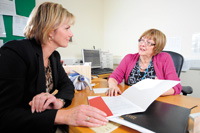 MPS clinical risk manager Diane Baylis shares risk advice for practices in how to prepare for a CQC inspection.
MPS clinical risk manager Diane Baylis shares risk advice for practices in how to prepare for a CQC inspection.
All general practices and primary medical services in England should have already registered with the Care Quality Commission (CQC). Practices are required to indicate to the CQC whether they are compliant or not with the 16 essential standards; inspection is the next stage in this process.
MPS Education runs clinical risk self-assessments (CRSAs) in hundreds of practices every year. Through these CRSAs we are aware that there is anxiety about the forthcoming CQC inspections. Although to our knowledge no inspections have yet taken place, inspections are due to commence summer 2013.
Following discussions with the CQC, combined with MPS’s experience of inspections of dental practices, we are able to share practical tips to help prepare for the forthcoming inspections. The CQC will undertake three types of inspection of general practices – these will be aimed at ensuring the practice is compliant with the Essential Standards of Quality and Safety.
- Scheduled – standard routine inspection
- Themed – where the inspector will focus on a specific area of concern
- Responsive – where the visit is triggered by particular concerns about the quality or safety of a service.
The CQC inspector will need to speak to the registered manager or nominated individual. If they are not available, the inspector will speak to a partner or the practice manager. MPS understands that the inspector will focus on five of the essential standards. In a sheduled or themed inspection, practices will be given 48 hours’ notice and the CQC will inform them which essential standards they will be reviewing.
"In a sheduled or themed inspection, practices will be given 48 hours’ notice"
In a responsive inspection, where there are paticular concerns about a service, they are likely to be unannounced. The inspector will not be simply looking at practice protocols, but at how these protocols have been implemented. The inspection will involve talking to patients and staff and looking at outcomes.
TOP TIP – Ensure staff have training appropriate to their role
A CQC inspector may ask your receptionist what she/he would do if she had concerns about a child. The receptionist should have received training in safeguarding children, be aware of the protocol and know who the concerns must be reported to. (See point 8, below).
|
What happens next?
Any actions required by the CQC as a result of the inspection will be issued to you in the form of a compliance action or enforcement action.
A compliance action will be issued where breaches of a regulation have a minor impact on people. The registered person will be required to submit a report showing your action plan in order to meet the regulations. The CQC may follow up on this with either a telephone call or a visit to check that the requested improvements have been made.
"A compliance action will be issued where breaches of a regulation have a minor impact on people"
An enforcement action is given where a breach of regulation is more serious and will always be followed up with a visit.
Tips to help you prepare for your inspection
1. Read the CQC guidance about compliance. See links below.
2. Encourage patients to complete the “please tell us your experience” on your profile page on the CQC website. This will help the CQC to collate information about your practice.
3. If there are any standards that you have declared non-compliant, have evidence available that demonstrates you have an action plan in place and how you are working towards compliance in that area.
Encourage patients to complete the “please tell us your experience” on your profile page on the CQC website.
4. Ensure your staff understand the role of the CQC and what may happen during an inspection visit. Include CQC on the agenda of your regular staff meetings. You may want to put up a notice in your waiting room on the day of the visit so your patients are aware what is happening.
5. Ensure that members of your patient participation group (PPG) are aware of the CQC inspection and plan how you would contact them if they are needed on the day of the inspection.
6. Undertake pathway tracking of a patient and look at:
- Availability of appointments and how the telephone is answered
- Confidentiality
- How your staff communicate with patients
- Information available for patients
- Health and safety – availability of emergency equipment
- Infection control – cleanliness
- The use of chaperones
- How patients are involved in their care
- Consent
- Records management.
Get feedback from the inspector at the end of the visit
7. Ensure that you are able to demonstrate:
- How your protocols have been implemented
- How you involve patients in their care
- How you gather patient feedback, eg, patient surveys, and how you act on this feedback in order to assess and monitor the quality of your care.
8. Ensure that your staff have received training that is appropriate for their role and that you have records of training in particular:
- Safeguarding children and vulnerable adults
- Mandatory training CPR etc.
9. Get feedback from the inspector at the end of the visit and make sure you ask any questions to make sure you know what happens next.
10. You will usually receive the report in ten working days. You will then have ten working days to check that the report is factually accurate and send any comments back to the CQC.
Useful links
This feature is brought to you by MPS Education and Risk Management. Each alert highlights risks uncovered by experienced risk managers in the field.